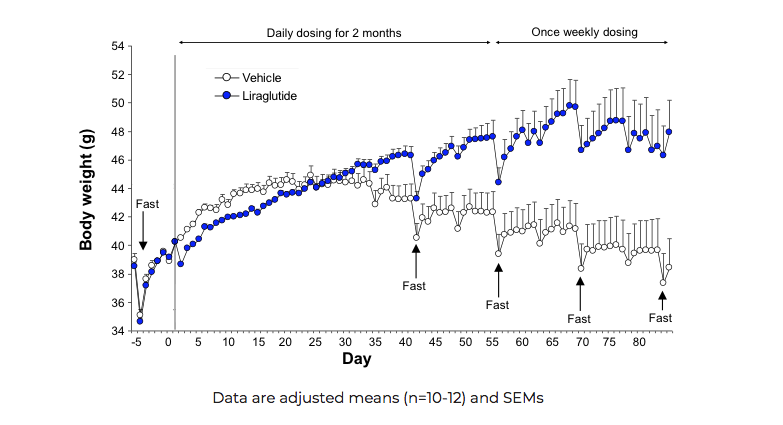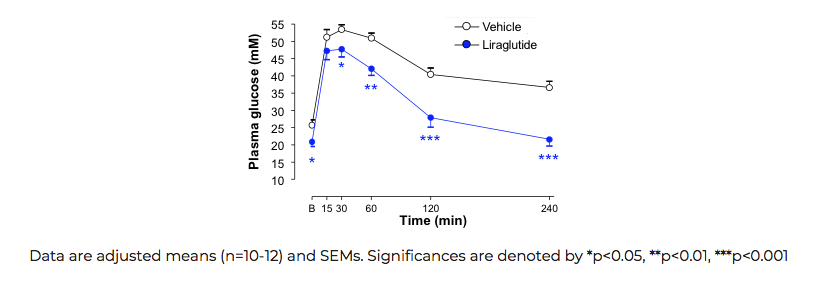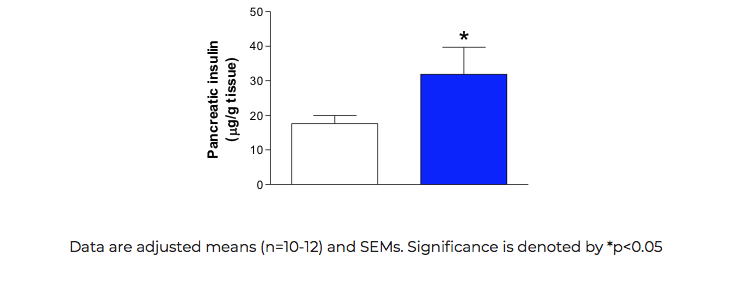Genetic models of insulin resistance and type 2 diabetes
We have extensive experience of working with animal models that are genetically predisposed to developing insulin resistance and progressive type 2 diabetes. Depending on the therapeutic indication, for example, insulin resistance or overt diabetes, we offer several models to suit your needs. Routinely used genetic models include:
- The ob/ob mouse – model of insulin resistance (caused by a mutation in the leptin gene)
- The db/db mouse – model of progressive type 2 diabetes (caused by a mutation in the leptin receptor gene)
- The Zucker fatty fa/fa rat – model of insulin resistance (characterised by deficits in leptin signalling)
- The Zucker diabetic fatty fa/fa (ZDF) rat – model of progressive diabetes (characterised by deficits in leptin signalling)
All four models display obesity, hyperphagia, hyperinsulinaemia and insulin resistance, but differ in the degree of hyperglycaemia.
Below is an example which demonstrates the protective effects of liraglutide (a clinically approved treatment for type 2 diabetes) to attenuate the progressive development of the diabetic phenotype (i.e. weight loss, impaired glucose tolerance, reduced pancreatic insulin).
Liraglutide prevents the progressive decline in body weight associated with worsening the type 2 diabetes phenotype in the db/db mouse model

Liraglutide improves glucose tolerance in the db/db mouse model

Liraglutide increases pancreatic insulin content in the db/db mouse model

Examples of standard readouts used in our genetic models of insulin resistance and type 2 diabetes include:
- Glucose tolerance tests (ivGTT, ipGTT or oGTT)
- Blood HbA1c
- Plasma biochemistry (e.g. fructosamine, cholesterol, HDL-C and LDL-C)
- Urinary glucose excretion
- Pancreatic insulin quantification
